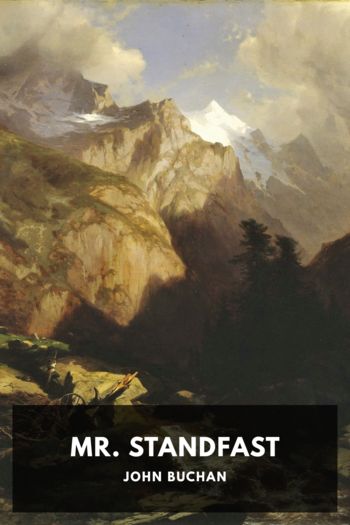Freedomnomics: Why the Free Market Works and Other Half-Baked Theories Don't by John Jr. (books to read for 12 year olds txt) 📗

- Author: John Jr.
Book online «Freedomnomics: Why the Free Market Works and Other Half-Baked Theories Don't by John Jr. (books to read for 12 year olds txt) 📗». Author John Jr.
13 Cass Sunstein, David Schkade, and Lisa Ellman of the University of Chicago Law School examined 4,488 published circuit court panel decisions from 1982 to 2002 on the most ideologically controversial issues—abortion, capital punishment, affirmative action, the Americans with Disabilities Act, campaign-finance laws, criminal procedure, federalism, race and sex discrimination, and takings (the rules under which the government can seize private property). They argue that for many of these decisions the way judges vote “can be predicted by the party of the appointing president.” Sunstein, Schkade, and Ellman, “Ideological Voting on Federal Courts of Appeals: A Preliminary Investigation,” working paper no. 03-9, University of Chicago Law School, September 2003. I think that they exaggerate this finding some, but their work is the most comprehensive on the topic to date.
14 See for example, John R. Lott, Jr. and Stephen G. Bronars, “Time Series Evidence on Shirking by Members of the U.S. House of Representatives,” Public Choice, invited conference volume, vol. 76, no. 1-2, June 1993: 125-14 and Bruce Bender and John R. Lott, Jr., “Legislator Voting and Shirking: A Critical Review of the Literature,” Public Choice, vol. 87, nos. 1 and 2, April 1996: 67-100.
15 Stephen G. Bronars and John R. Lott, Jr., “Do Campaign Donations Alter How Politicians Vote?” Journal of Law and Economics, 1997.
16 The proof commonly cited to support the notion that donations are systematically used to buy politicians’ votes does not withstand scrutiny. For example, one study found that “contributors who attempt to influence the voting behavior of members of Congress give the most money to legislators whose constituency interest suggests that they are likely to be undecided on how to vote.” (See Thomas Stratmann, “Are Contributors Rational?: Untangling Strategies of Political Action Committees,” Journal of Political Economy, 1992, 647.)
The study, which examined farm issues, discovered that pro-farmer donors tend not to give to candidates in areas where all the constituents are farmers, nor in districts where none of the constituents are farmers, but in districts that are evenly split. In the view of this study’s author, the results show that donors are buying candidates’ future votes by making their election dependent on the donors’ support.
But the study’s results, while consistent with vote-buying, really just demonstrate that donors don’t want to waste their money on candidates who are highly likely to either win or lose their race. If you care about farmers, why waste your money donating to candidates in districts where all the voters are farmers and candidates from both parties support them. These findings are perfectly consistent with the alternative explanation that donors try to elect candidates who already support their positions.
The same author ostensibly also found pervasive vote buying the timing of political donations. According to this analysis, although a candidate benefits most from donations received early in an election cycle, many donors, when uncertain about a candidate’s beliefs, refrain from donating to him until after he’s elected and casts the desired vote on some key issue. The author interprets this donation as a quid pro quo—a kind of pay-off for voting the right way. This study, however, suffers from the same problem as previously mentioned; donors would behave the same way if they were donating to politicians who already agree with their views. When donors are faced with a candidate without a well-established reputation, they simply wait to learn what he believes before they donate to him. See Thomas Stratmann, “The Market for Congressional Votes: Is Timing of Contributions Everything,” Journal of Law and Economics , vol. 61 (April 1998), and also Randall S. Kroszner and Thomas Stratmann, “Interest-Group Competition and the Organization of Congress: Theory and Evidence from Financial Services’ Political Action Committees,” American Economic Review, vol. 88 (December 1998): 1163-87.
Thomas Stratmann, “The Market for Congressional Votes: Is timing of Contributions everything,” Journal of Law and Economics, vol. 61 (April 1998). See also Randall S. Kroszner and Thomas Stratmann, “Interest-Group Competition and the Organization of Congress: Theory and Evidence from Financial Services’ Political Action Committees,” American Economic Review, vol. 88 (December 1998): 1163-1187.
17 Anderson Cooper, “Louisiana Congressman Facing Bribery Investigation,” Cnn.com, May 22, 2006 (http://transcripts.cnn.com/TRANSCRIPTS/0605/22/acd.01.html); Associated Press, “Rep. Ney’s Plea Deal Tests Corruption as Election-Year Issue,” Foxnews.com, Friday, September 15, 2006. (http://www.foxnews.com/story/0,2933,214146,00.html); and Associated Press, “Ohio Rep. Bob Ney Admits Guilt in Corruption Probe,” Foxnews.com, Friday, September 15, 2006. (http://www.foxnews.com/story/0,2933,213927,00.html).
18 Stephen Bronars and John R. Lott, Jr., “Do Campaign Donations Alter How a Politician Votes?,” Journal of Law and Economics, vol. 40, no. 2, October 1997: 342-343.
19 Bruce Bender and John R. Lott, Jr., “Legislator Voting and Shirking: A Critical Review of the Literature,” Public Choice, vol. 87, nos. 1 and 2, April 1996: 67-100. See also John R. Lott, Jr and Stephen Bronars., “Time Series Evidence on Shirking by Members of the U.S. House of Representatives,” Public Choice, invited conference volume, vol. 76, no. 1-2, June 1993: 125-149.
20 Press Release, “Biden Praises Passage of McCain-Feingold Legislation”, Sen. Joseph Biden’s website, April 2, 2001. Http://biden.senate.gov/news-room/details.cfm?id=229522&&.
21 In the Supreme Court decision in Nixon v. Shrink Missouri Government PAC, Justice David Souter cites the argument from the Buckley v. Valeo decision that contribution limits have “served the important governmental interests in preventing the corruption or appearance of corruption of the political process that might result if such contributions were not restrained.”
22 See Justice Bryer’s concurrence in Nixon v. Shrink Missouri Government PAC (98-963) 528 U.S. 377 (2000) 161 F.3d 519.
23 John R. Lott, Jr., “The Effect





Comments (0)